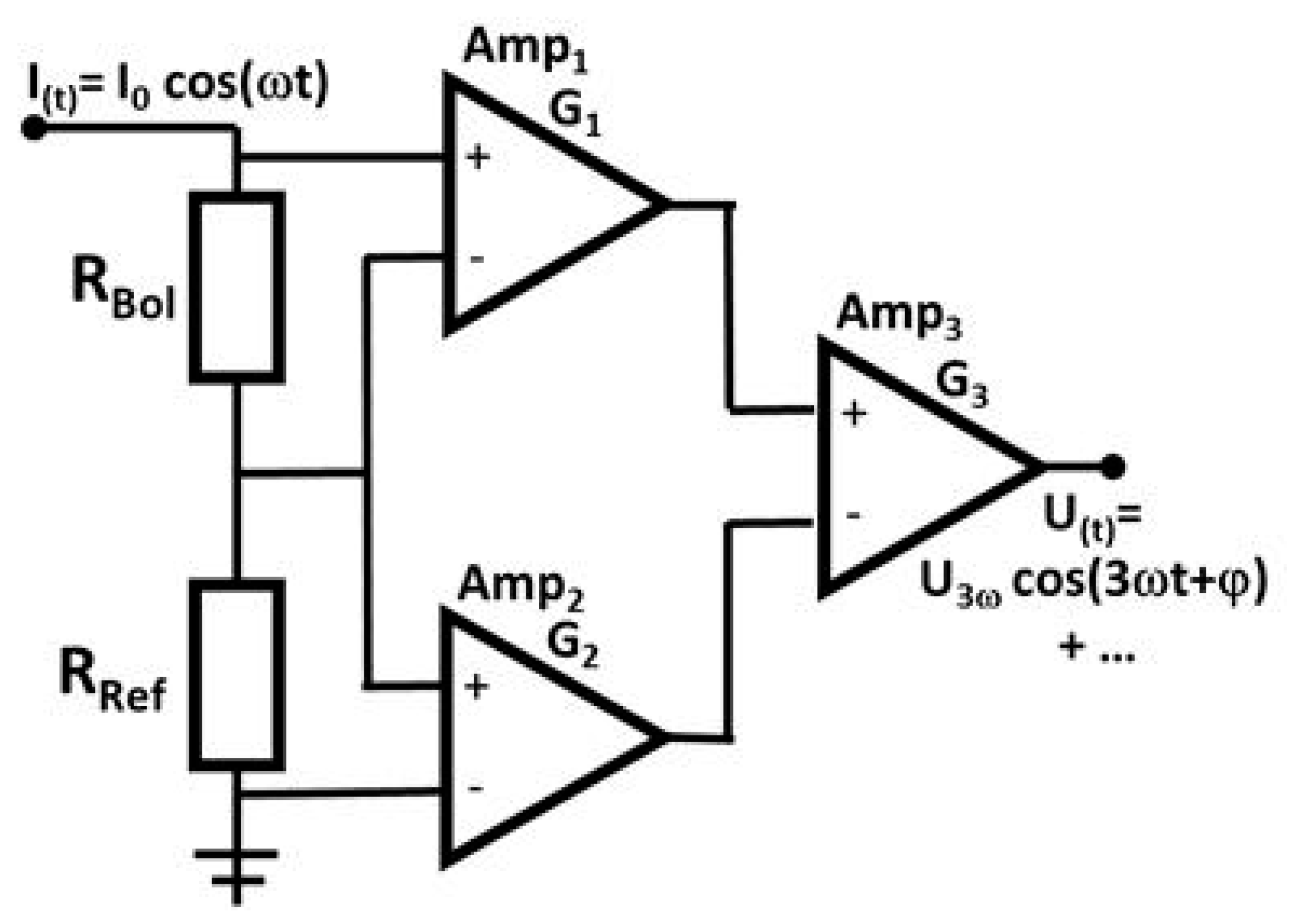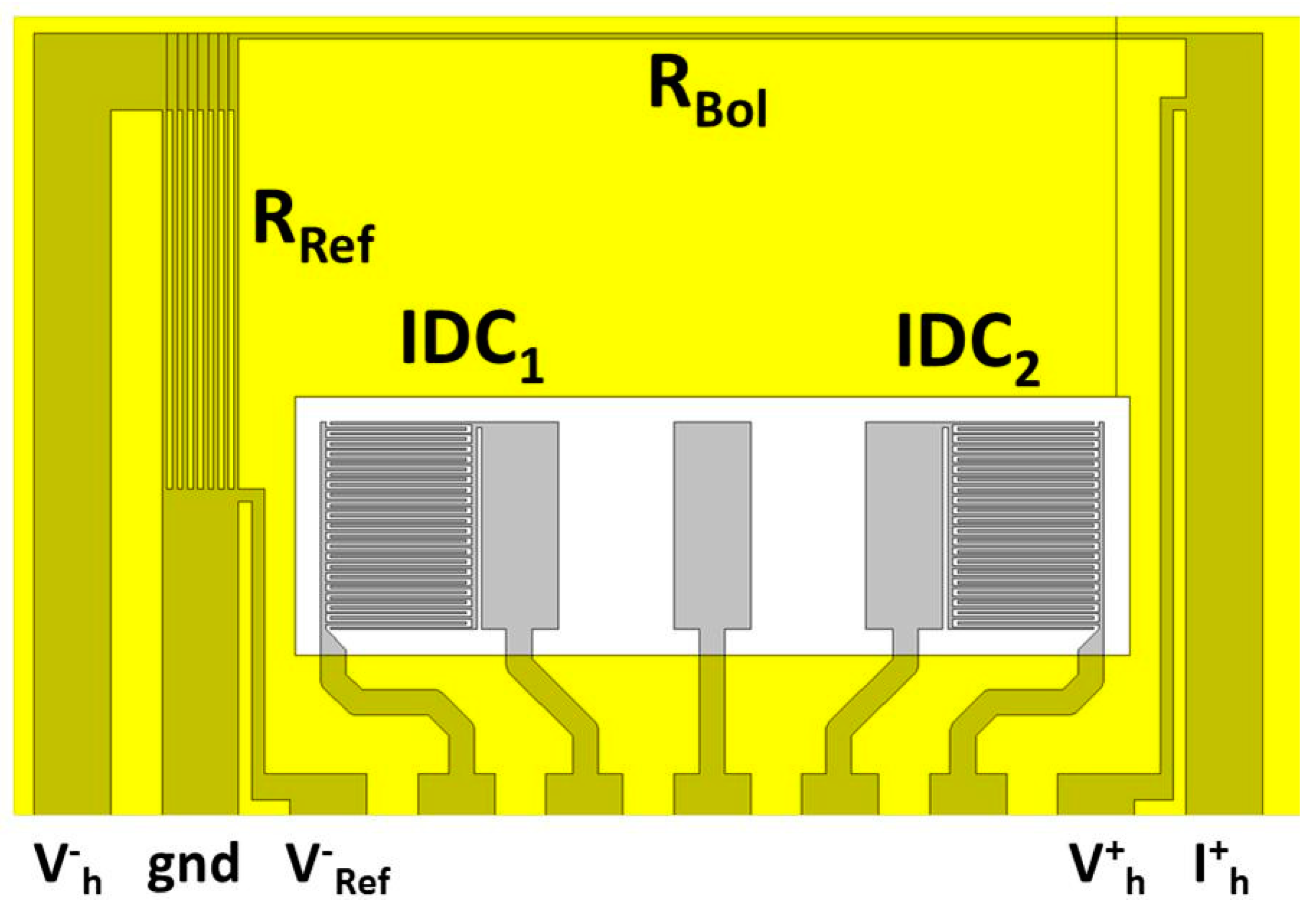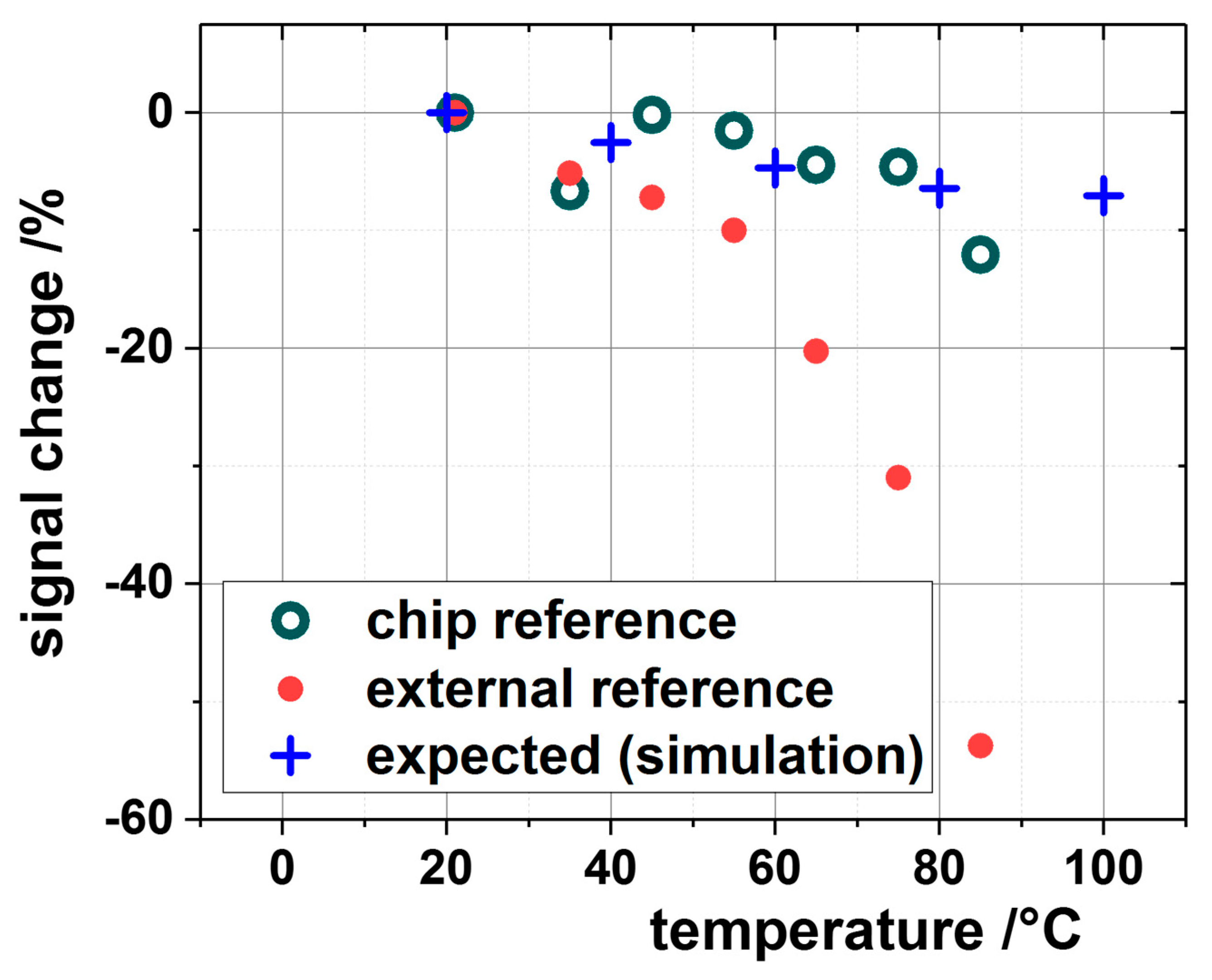2. Experimental
Here, an alternating current I
0 of frequency ω is applied to a resistive heater with resistance R
Bol, causing temperature oscillations T and thus a modulation of the temperature dependent heater resistance with the double frequency 2ω. This results in a 3ω part V
3ω of the measured heater voltage spectrum that can easily be separated and from that the amplitude of the temperature oscillation ΔT can be determined from:
where α
R is the temperature coefficient of the heater material [
2]. The amplitudes ΔT get higher with lower thermal conductivity of the analyte since the thermal heating power R
BolI
2 needs a higher temperature difference ΔT for dissipation into the analyte.
Typically, the 3ω voltage is a factor of thousand smaller than the heater voltage with frequency ω. In order to get a better signal to noise ratio SNR, there are methods to subtract the one omega heater voltage.
Figure 1 shows a possible evaluation circuit. The same AC current I
0 that drives the heater R
Bol flows through a reference resistor R
Ref connected in series. The bolometer voltage is amplified with gain G
1. In addition, the voltage of the reference resistor is amplified with gain G
2 and the two voltages are subtracted at amplifier 3.
Here it is important, that a temperature modulation only affects the heater but not the reference resistance. This can be done by using a reference resistor with negligible temperature dependence, for example constantan. Then, the gain factors can be adjusted to compensate widely the 1ω heater-voltage, leaving the 3ω voltage at a higher SNR or even enables a direct analogous measurement of the 3ω voltage. Often the reference resistor is integrated in the evaluation circuit board but this might be disadvantageous. For example, a change in the heater baseline temperature changes the resistance baseline due to the temperature dependency of the heater material and therefor the gain factors. That causes a signal drift unless the reference resistance is not adjusted at every temperature. To overcome this temperature drift, a reference resistor with the same temperature and temperature coefficient as the heater material is needed. We therefore used a reference resistor structure of the same material as the heater and placed it on the sensor chip. The temperature modulation in the reference RRef was avoided by using a much lower resistance value (for example with factor 20) so that the temperature modulation of the reference resistor is negligible.
The results presented were obtained within a current development of a small electronic tongue system consisting of partially insulated gold electrodes on a polymer substrate (
Figure 2). Besides interdigital capacitors (IDC) for the measurement of electric impedances, there are a linear heater structure R
Bol and a reference resistor R
Ref on the chip that both are driven by the same AC heater current I
0. Here the heater structure R
Bol consists of a structured metal strip of gold (3700 µm long, 20 µm wide and 0.2 µm thick). The reference resistor R
Ref consists of 8 shorter metal strips (1470 µm long, 20 µm wide, 0.2 µm thick) connected in parallel, it is lower by a factor of about 20. If the gain ratio of G
1/G
2 = R
Ref/R
Bol, most of the 1ω part of the bolometer voltage is subtracted, the 3ω-part is passing amplifier 3 with a high signal to noise ratio. If the temperature of the analyte changes, both resistor structures change in resistance so the gain ratio inherently keeps constant and a temperature induced change of R
Bol is compensated automatically.







